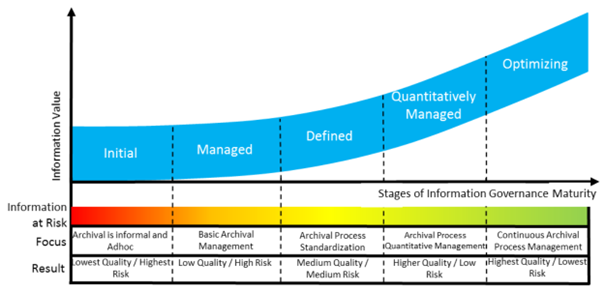Maturity Model
The eArchiving Capability Maturity Model (eACMM) enables the assessment of the information governance practice in organizations regarding digital archiving. The eACMM focuses on the most relevant references for digital archiving especially those that are being improved in the context of the former eArchiving Building Block and the current eArchiving Initiative.
The use of maturity models is widespread and accepted, both in industry and academia because of their simplicity and effectiveness. They can help to understand the current level of maturity of a certain aspect in a meaningful way, so that stakeholders can clearly identify strengths and weaknesses requiring improvement, and thus prioritise what must be done to reach a higher level. This can be used to show the outcomes that will result from that effort, enabling stakeholders to decide if the outcomes justify the effort and/or investment.
A Maturity Model consists of several entities, including “maturity levels” (often six) which are, from the lowest to the highest, (0) Non-Existent, (1) Initial, (2) Basic, (3) Intermediate, (4) Advanced and (5) Optimizing. A Maturity Model also provides a way for organizations to see clearly what they must accomplish to progress to the next maturity level.

The eArchiving Capability Maturity Model uses the capabilities described in OAIS as functional entities and the eArchiving Reference Architecture and the levels defined in SEI CMMI.
The reference architecture supports the application of the eACMM with views showing the relationship between the process elements of the OAIS functional entities and the corresponding Maturity Model requirements.